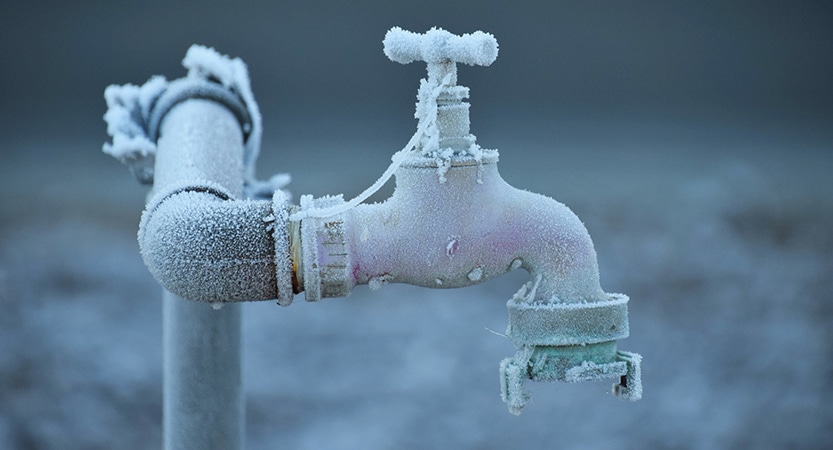Shielding Your Pipes from Freezing Issues: Critical Strategies
Shielding Your Pipes from Freezing Issues: Critical Strategies
Blog Article
The content which follows relating to How To Avoid Freezing Pipes is rather motivating. Read it for your own benefit and decide what you think of it.

Cold weather can ruin your pipes, specifically by freezing pipes. Below's just how to prevent it from occurring and what to do if it does.
Intro
As temperatures decrease, the threat of icy pipes boosts, possibly leading to expensive fixings and water damage. Understanding exactly how to stop icy pipelines is essential for house owners in chilly environments.
Recognizing Icy Pipelines
What causes pipes to ice up?
Pipes freeze when revealed to temperatures below 32 ° F (0 ° C) for extended periods. As water inside the pipelines freezes, it increases, taxing the pipeline walls and possibly causing them to rupture.
Risks and problems
Icy pipes can cause water supply interruptions, home damages, and pricey repairs. Ruptured pipelines can flooding homes and cause comprehensive architectural damages.
Indications of Frozen Piping
Recognizing icy pipelines early can stop them from breaking.
Just how to recognize icy pipelines
Try to find reduced water circulation from faucets, unusual odors or sounds from pipelines, and noticeable frost on subjected pipes.
Prevention Tips
Insulating susceptible pipes
Cover pipelines in insulation sleeves or use heat tape to shield them from freezing temperature levels. Concentrate on pipes in unheated or exterior locations of the home.
Heating strategies
Maintain interior rooms effectively heated up, specifically areas with pipes. Open closet doors to permit warm air to flow around pipes under sinks.
Shielding Outside Pipes
Garden tubes and outside faucets
Disconnect and drain pipes garden hose pipes prior to winter months. Install frost-proof spigots or cover outdoor taps with protected caps.
What to Do If Your Pipes Freeze
Immediate actions to take
If you believe frozen pipelines, keep faucets open to relieve stress as the ice melts. Utilize a hairdryer or towels taken in warm water to thaw pipelines slowly.
Long-Term Solutions
Architectural changes
Think about rerouting pipes away from exterior walls or unheated locations. Add added insulation to attics, cellars, and crawl spaces.
Updating insulation
Buy high-grade insulation for pipes, attic rooms, and walls. Appropriate insulation helps maintain consistent temperatures and lowers the risk of icy pipes.
Verdict
Preventing frozen pipelines calls for proactive steps and fast actions. By understanding the causes, indicators, and preventive measures, home owners can protect their pipes during cold weather.
6 Proven Ways to Prevent Frozen Pipes and Protect Your Home
Disconnect and Drain Garden Hoses
Before winter arrives, start by disconnecting your garden hoses and draining any remaining water. Close the shut-off valves that supply outdoor hose bibs and leave the outdoor faucet open to allow any residual water to drain. For extra protection, consider using faucet covers throughout the colder months. It’s also important to drain water from any sprinkler supply lines following the manufacturer’s directions.
Insulate Exposed Pipes
Insulating your pipes is an effective way to prevent freezing. Pipe insulation is readily available at home improvement stores and is relatively inexpensive. Pay close attention to pipes in unheated areas such as the attic, basement, crawl spaces, or garage. Apply foam insulation generously to create a buffer against the cold. You can also wrap your pipes in heat tape or thermostat-controlled heat cables for added warmth.
Seal Air Leaks
Inspect your home for any cracks or openings that could let in cold air. Seal any holes around the piping in interior or exterior walls, as well as the sill plates where your home rests on its foundation. Additionally, make sure to keep your garage door closed unless you’re entering or exiting. Leaving it open creates a significant air leak that can lead to frozen pipes.
Allow Warm Air Circulation
During cold snaps, it’s essential to allow warm air to circulate evenly throughout your home. Leave interior doors ajar to promote better airflow. Open kitchen and bathroom cabinets to help distribute heat consistently around the rooms. If you have small children or pets, be sure to remove any household chemicals or potentially harmful cleaners from open cabinets for safety.
Let Faucets Drip
A small trickle of water can make a big difference in preventing ice formation inside your pipes. When temperatures drop significantly, start a drip of water from all faucets served by exposed pipes. This continuous flow helps prevent the water from freezing. Additionally, running a few faucets slightly can relieve pressure inside the pipes, reducing the chances of a rupture if the water inside does freeze.
https://choateshvac.com/6-proven-ways-to-prevent-frozen-pipes-and-protect-your-home/

Hopefully you enjoyed reading our piece about How to Prevent Your Pipes From Freezing. Thank you so much for spending some time to read our content. Enjoyed reading our entry? Please share it. Help someone else locate it. Thanks for going through it.
Book Now! Report this page